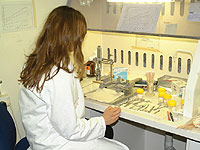|
|||||||||||||||||||||||||||||||||||||||||
| Pharmaceutical Development of New Medicines - PHAR9102 | |||||||||||||||||||||||||||||||||||||||||

Description PLEASE NOTE: This course has had a change of code - up to and including 2009 it was PHPH9102.
The course begins with an introduction to dosage forms and discusses the selection of a particular dosage form in a given case. The design, development and manufacture of a dosage form is described using tablets as an example. The relevance of the properties of active ingredients to product development is discussed. The chapter on product quality outlines concepts of quality, quality assurance and quality control, discusses the significance of pharmacopoeial monographs, and provides a rationale for the various in vitro tests of quality for raw materials and finished products. Particular attention is given to methods of testing for impurity content, the significance of different types of impurity, disintegration and dissolution testing, and the design and interpretation of stability studies. Concepts of sterility and sterilisation are introduced together with the means of achieving control. The fundamental relationship between ongoing quality and Good Manufacturing Practice is discussed, together with examples of validation of later changes or variations to formulation and manufacturing aspects. The design, conduct and reporting of bioavailability and bioequivalence studies is described along with formulation strategies for drugs which have limited bioavailability. There is an introduction to biological medicines, which outlines their characteristics, quality control and potential for contamination by infectious agents. The particular problems associated with formulation of protein pharmaceuticals are considered, together with their stability and compatibility. Note: The course is compulsory for programmes 5504, 5511 and 9060.
|
|||||||||||||||||||||||||||||||||||||||||


